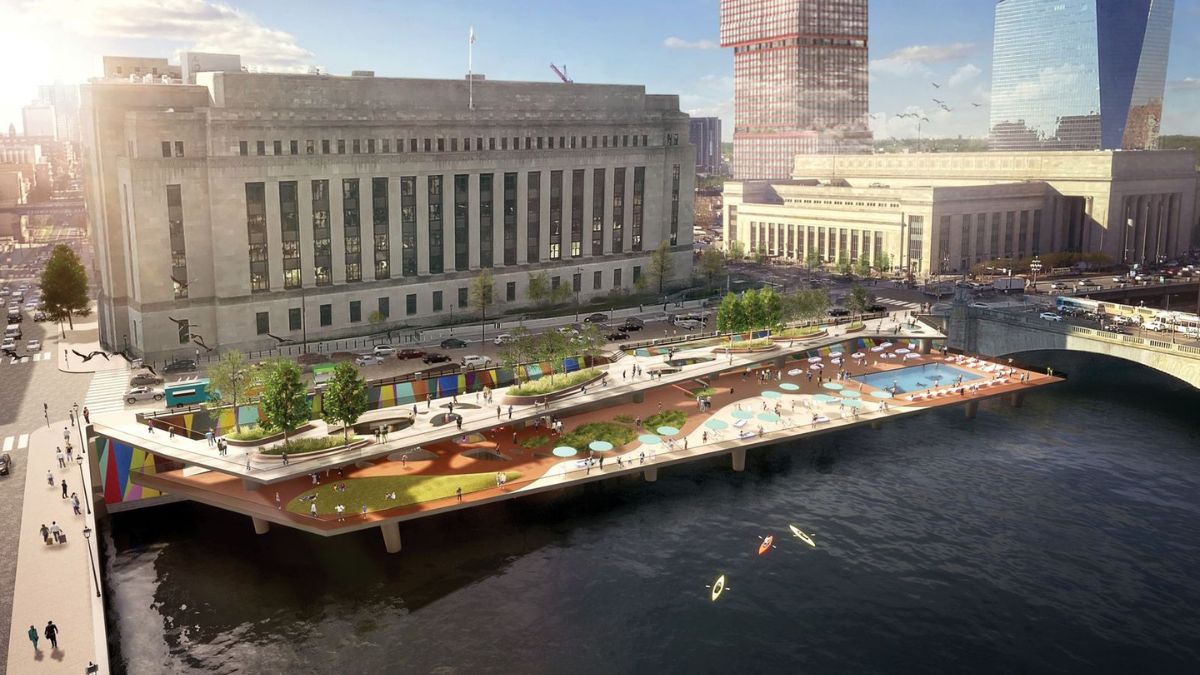Friends of the Wissahickon members got a firsthand look at a major new vision for Fairmount Park in late March.
The results of the study were presented by Harris Steinberg, the founding executive director of PennPraxis and a veteran of many major planning projects citywide. He's now the executive director of Drexel University's Lindy Institute for Urban Innovation and on the Fairmount Park study's executive team.
"The basic message is this is a resource that is unparalleled," Steinberg said, speaking with NewsWorks about the landmark study.
Better living through highways?
The study, dubbed "The New Fairmount Park," was underwritten by the William Penn Foundation. The Commission on Parks and Recreation, Philadelphia Parks and Recreation, and nonprofit Fairmount Park Conservancy partnered with PennPraxis to produce the study. It's been in the works since 2013.
The sprawling report on America's first municipally protected watershed park addresses everything from signage to ecological stewardship.
And it tackles existing challenges to park access like the many nearby residents who find themselves cut off from green space and water by decades of creeping city infrastructure.
Local
Breaking news and the stories that matter to your neighborhood.
"We ran a highway through the park, for goodness sake," Steinberg said of disregard for park.
"Sixty-plus years ago, there was a tremendous movement worldwide for 20th century engineering to solve city problems," Steinberg continued. This meant highways bisecting cities, and culverting creeks in favor of roadways.
"The water supply system became just another problem to solve, as opposed to something to celebrate. We stripped away all that integration into public life," he said. Few people know that Fairmount Park, for example, has 16 different creeks and streams that feed the Schuylkill.
Now, we're facing a more "enlightened" moment, Steinberg insists, especially with a progressive Philadelphia Water Department. "There's a moment now to really push it toward a new vision, particularly as we enter a mayoral homestretch."
Fairmount Park by the numbers
The report crunches some serious numbers. The 2,050-acre park boasts 340,000 members of park organizations, with five cultural institutions, including the Philadelphia Museum of Art, that each draw over 100,000 visitors annually. There are five separate police districts within the park, and four playgrounds. Seventy-thousand neighbors live within a half-mile walk of its borders.
The study also examined just how the park's landscape breaks down. The Schuylkill takes up 400 acres, and 42 percent of the park's surface area is tree canopy. Less than two percent is natural meadow, while recreational fields and lawns make up 20 percent. And despite citywide momentum in new stormwater infrastructure, green stormwater projects make up just 0.3 percent of the park.
On the industrial side, 400 acres of West Fairmount Park was removed for the construction of the Schuylkill Expressway, and the park as a whole has 54 miles of roads (11 percent of its surface area) and 19 miles of rail track.
So how many people use the park each year? Seven million, the report says, but since there is no single agency solely dedicated to administering the park and its events, that's "a very layered number," Steinberg cautions.
Who's visiting?
That number is extrapolated from a variety of sources, explained Steinberg and Andrew Goodman, the community engagement director at the New Kensington CDC, who helped with this aspect of the study.
Fairmount Park visitors include everyone from rowers to Art Museum visitors, Steinberg said.
"The seven million figure actually just scratches the surface of the park's true visitor ship," Goodman said.
The existing data has a variety of sources, including reports from park landmarks and facilities, like the Mann Center.
The highest-trafficked stretch of the trail along Kelly Drive on Boathouse Row, for example, saw over 1.2 million users in 2013, according to a counting machine. But because the machine merely tracks each body that passes by, many of those were repeat users, like joggers.
According to Goodman, the busiest single day on Boathouse Row in 2013 saw over 9,300 people.
Survey says ... more surveys
The study also includes a comparison between Fairmount Park, Brooklyn's Prospect Park, and St. Louis's Forest Park. It's not a case of apples to apples, Steinberg said, but the juxtaposition is still informative.
Despite Fairmount being by far the largest park of the three, it falls far behind proportionally on everything from budget to staff to volunteer hours.
A recurring theme of the study is the need for more studies, including a park-wide transportation study.
Looking further ahead, the study looks ahead to things like a redesign of the Schuylkill Expressway that would let the park pass underneath the highway, a rerouting of Belmont Avenue, and a dedicated police district for the whole park. Study leaders also ultimately hope to improve pedestrian and biker safety and reduce car traffic.
A wide range of shorter-term solutions to boost park access, programming, education, and ecological health include a hackathon to better incorporate technology into the park's dissemination of information, from maps and apps to calendars and websites, rain-garden partnerships with PWD, and better youth engagement through school coordination.
The study also recommends an overhaul of five major entry points to the park: the Mander Recreation Center, Strawberry Mansion, Brewerytown, East Parkside and West Parkside.
Neighbors react
"There were questions that everyone has, about gentrification, resources, managing traffic," Steinberg said of the FOW response to his report.
But the most important thing is strong civic dialogue and neighbor involvement, he added. "These are really simple concepts that are going to need a lot of support and a lot of resources, yet you want the public behind it in a way that it's going to be used in a really robust fashion."



